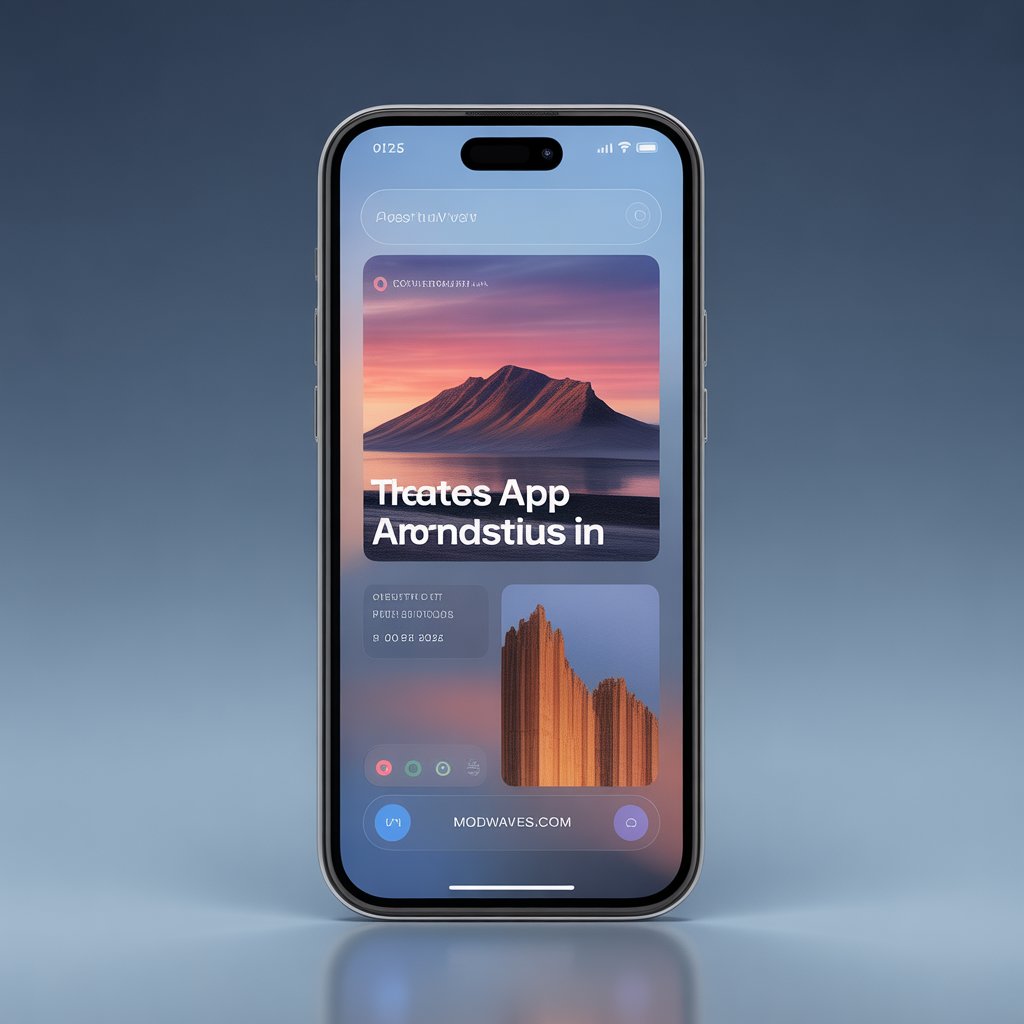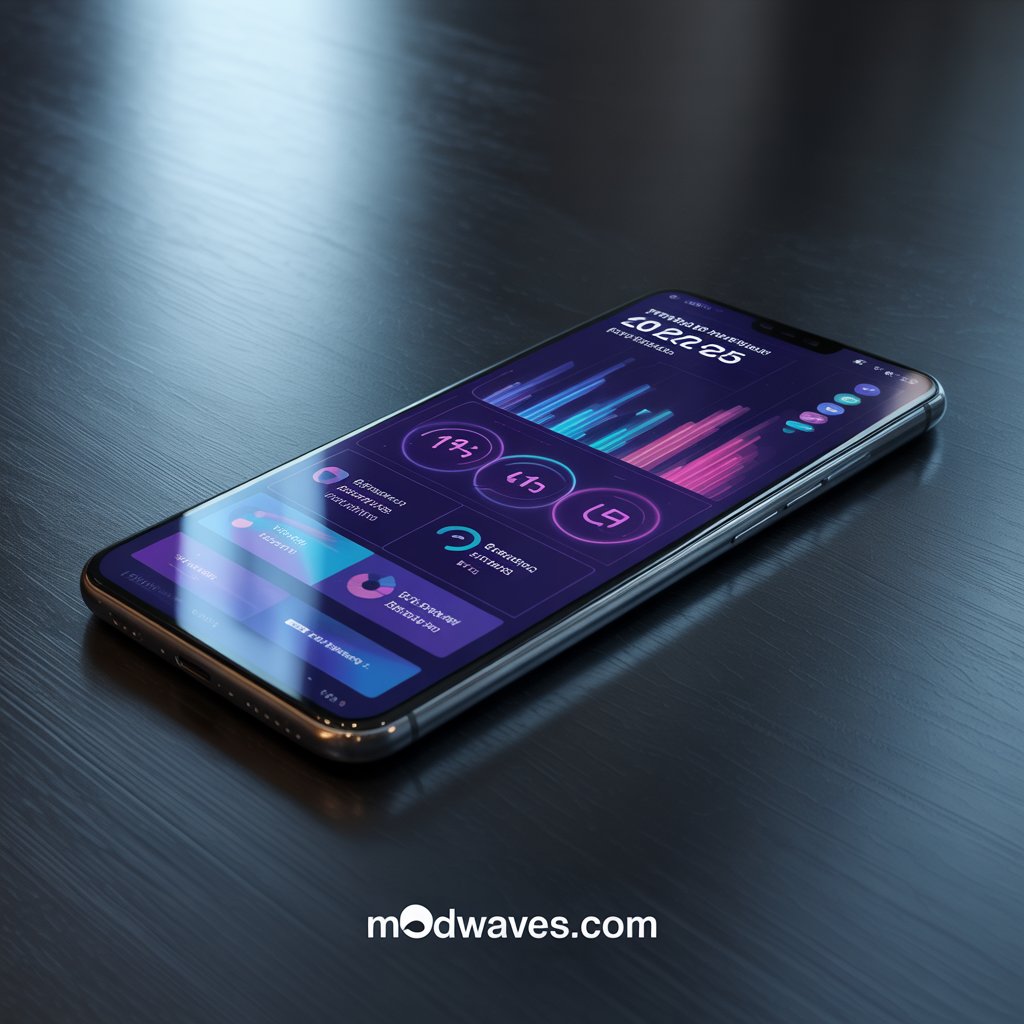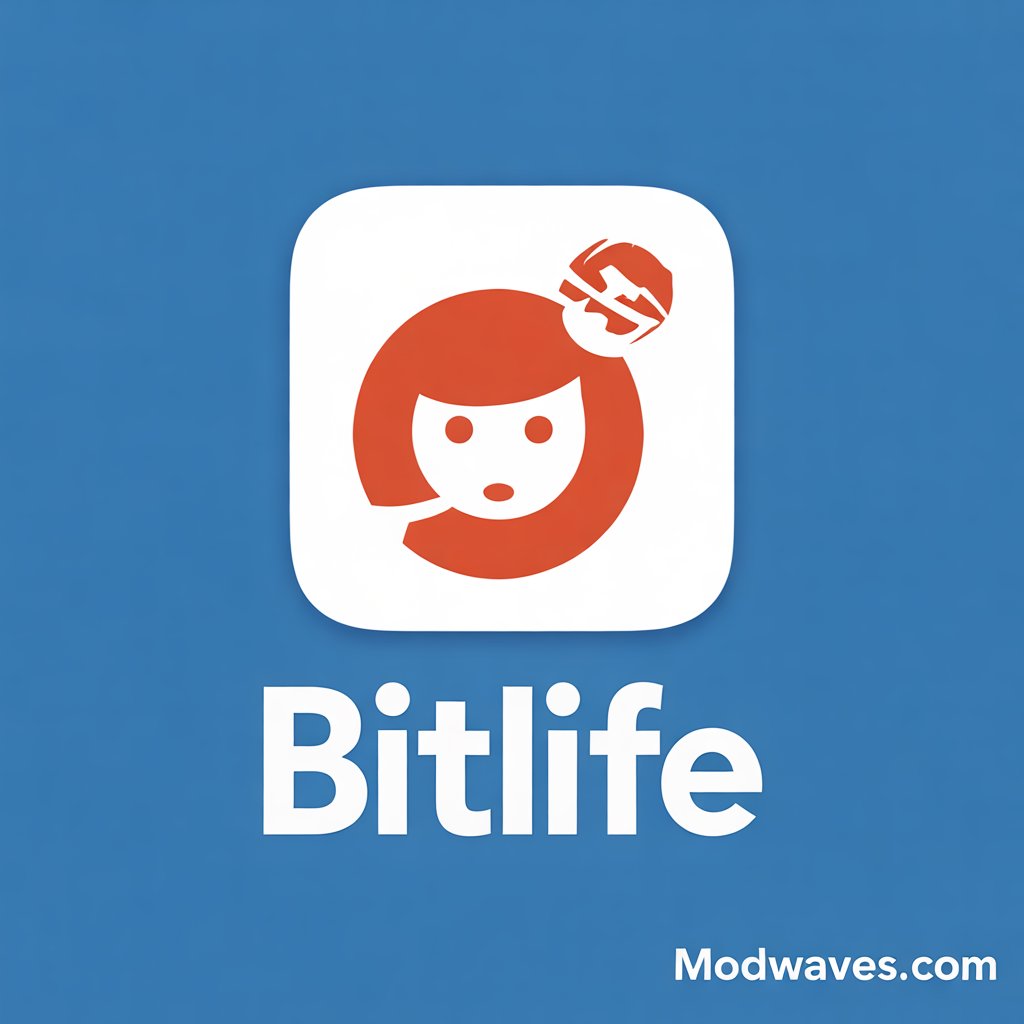Introduction
The mobile app world is moving at lightning speed, and 2025 is already proving to be a pivotal year. If you’re involved in app development, tech strategy, or even just a power user, staying ahead of the latest APK app trends isn’t just smart it’s necessary. The way we build, deploy, and experience mobile apps is evolving, powered by AI, 5G, cross-platform integration, and a rapidly shifting user base.
Why does this matter? Because APK files those humble packages that power Android applications are at the core of everything. When we discuss the latest APK app trends in 2025, we’re not just referring to a few cosmetic changes. We’re exploring transformative technologies, more intelligent user engagement, hyper-personalized experiences, and significant shifts in how developers code and users interact with apps.
In this comprehensive guide, we’ll explore the biggest, boldest, and most game-changing innovations in mobile tech and APK development for 2025. Whether you’re a developer, entrepreneur, or digital enthusiast, understanding these trends can help you build better apps, stay secure, and get ahead of the competition.
So let’s break down what the future holds for APK apps, from Android and iOS integration to cloud gaming and advanced AI-driven user interfaces.

What Are APK App Trends and Why Are They Important?
Let’s start with the basics. An APK (Android Package Kit) is the file format used to distribute and install apps on Android devices. Think of it like a .zip file, but for Android applications. It contains everything an app needs to function, including code, assets, resources, and security credentials.
When we discuss APK app trends, we refer to the direction in which Android app development is heading—specifically, the tools being used, the features becoming standard, and how user expectations are evolving. These trends are essential for several reasons:
- User Expectations: Today’s users demand increased speed, enhanced security, and personalized experiences.
- Developer Efficiency: New tools and frameworks enable faster and more flexible development.
- Security Standards: With every passing year, the bar for app safety and data protection continues to rise.
- Platform Evolution: As Android and iOS become more integrated, APK files must evolve to keep up.
In 2025, understanding the latest APK app trends is no longer optional. It’s essential for anyone who wants to remain competitive in this high-speed mobile ecosystem.
Latest APK App Trends in 2025: A Bird’s Eye View
So what’s actually happening in 2025 that’s shaking up the mobile world?
Cross-Platform Synergy
We’re seeing APKs developed alongside iOS-compatible code using frameworks like Flutter and Kotlin Multiplatform. Developers now expect apps to run smoothly on both systems without duplicating work.
AI & Machine Learning
From intelligent recommendations to automated customer support, AI is being embedded into APKs to deliver personalized, adaptive experiences that keep users hooked.
Cloud-First Architecture
With the advent of 5G and edge computing, apps now rely heavily on cloud APIs, resulting in APKs that are leaner and more responsive than ever.
Privacy-Driven Innovation
Users are savvier about their data. Modern APKs integrate privacy dashboards, permission monitors, and on-device data processing to boost transparency.
Gaming Evolves
Game APKs now support real-time multiplayer, haptic feedback, and VR/AR capabilities with cloud streaming options. It’s console-level engagement on mobile.
These sweeping changes signal a monumental shift in how we build and use Android apps. And this is just the start of the deep dive into the latest APK app trends in 2025.
Latest APK App Trends in Android 2025
The Android ecosystem continues to evolve at breakneck speed, and 2025 is showcasing some of the most advanced capabilities we’ve ever seen. The latest APK app trends in Android 2025 are a testament to how much the platform has matured, offering developers more power, flexibility, and reach than ever before.
Android 14: A Developer’s Playground
Android 14 introduces deeper integration of Material You, dynamic themes, and adaptive UIs that adjust according to user preferences. This means APK files now include more configurations than ever to support real-time personalization.
With built-in support for satellite connectivity, Android apps can maintain function in remote locations—huge for travel, outdoor, and emergency apps.
On-Device AI and Edge Processing
Many of the latest APK app trends involve advanced AI features running directly on the device. No cloud latency, no data leakage. This is possible thanks to Qualcomm’s latest chipsets and Android 14’s AI acceleration APIs.
You’ll find:
- Real-time translation
- On-device voice assistants
- Smart replies and predictive typing
- Contextual app behavior based on user activity
Seamless App Integration
Google’s push toward modular app design means APK files are now smaller and faster, only downloading features when they’re actually needed. This enhances performance and enables instant updates, significantly improving the user experience.
Developers now leverage Android App Bundles (.aab), but APKs remain crucial for sideloading and testing, especially during beta phases.
Security Enhancements
Security is a central theme in 2025. Google Play Protect now works in real-time, scanning every APK installation even those from third-party sources. Apps are sandboxed more strictly, and permission prompts are more granular than ever.
Apps targeting Android 14 must support:
- Runtime permission requests with expiration
- Verified app links and intents
- Encrypted local storage by default
These updates demonstrate that the latest Android 2025 APK app trends aren’t just cosmetic—they’re rewriting the rules of what’s possible on a mobile device.
Latest APK App Trends in Android and iOS 2025
It’s not just Android that’s evolving. The latest APK app trends in Android and iOS 2025 show that the line between platforms is becoming more blurred than ever. APKs are, by nature, Android-specific. But thanks to cross-platform development tools, their relevance in iOS conversations is growing.
Kotlin Multiplatform: Code Once, Run Anywhere
One of the most significant developments is Kotlin Multiplatform. Developers can now write shared business logic and deploy it on Android (as APKs) and iOS (as native apps) with minimal changes. This dramatically reduces development time and cost.
Flutter 4.0
Flutter’s new update supports enhanced GPU acceleration, adaptive layout engines, and better iOS integration. Developers can now write code once and build responsive UIs that deploy smoothly on both platforms.
This means that while APK files remain Android-specific, their development is no longer done in isolation. The code behind those APKs is now part of a larger, platform-agnostic codebase.
Hybrid Deployment Strategies
More app creators are using hybrid deployment, where they create a core APK (Android app file) and a matching IPA (iOS app file) using shared components. This ensures consistent branding, UX, and performance across devices.
Third-Party Tools & Converters
While you still can’t directly convert an APK to an iOS file, tools like Codemagic and J2ObjC allow for portions of APK-based code (like Java libraries) to be reused in iOS development. These tools are shaping the latest APK app trends in Android iOS 2025 by reducing platform silos.
The future is not Android vs. iOS—it’s Android and iOS, working together with smarter, leaner codebases. That’s a win for users and developers alike.
Latest Mobile App Development Technologies in 2025
Technology is the backbone of mobile innovation. In 2025, the latest APK app trends are heavily influenced by groundbreaking development tools and frameworks that are reshaping how apps are built, optimized, and scaled.
Flutter, React Native, and Kotlin Multiplatform Dominate
These three tools are now the holy trinity of mobile development.
- Flutter 4.0 offers adaptive layouts and native speed across platforms.
- React Native has improved integration with native Android SDKs, making hybrid apps more seamless and intuitive.
- Kotlin Multiplatform enables shared business logic, drastically cutting build times for both APK and iOS formats.
Cloud-Native Development
With 5G now mainstream and edge computing on the rise, developers are building apps that rely more on cloud APIs than device storage. APKs are now lighter and designed to offload heavy processes, such as media editing, AI, or data syncing, to the cloud.
This is making apps:
- Faster to install
- More battery efficient
- Easier to update in real time
CI/CD and Automation
Modern apps are developed and deployed continuously. Tools like GitHub Actions, Bitrise, and Firebase CI/CD are automating testing and release pipelines for APK builds. This means:
- Fewer bugs
- Faster feature rollouts
- Smoother updates
Secure by Design
Developers are now using built-in encryption, advanced permissions, and runtime integrity checks by default. These tools make the latest APK app trends not only innovative but far more secure.
In short, the dev stack behind modern APK apps is leaner, faster, and infinitely more potent than it was just a few years ago.

Latest APK App Trends in Gaming and Entertainment
The gaming and entertainment sectors have always been at the forefront of mobile innovation, and in 2025, they’re leading the charge in redefining user engagement through the latest APK app trends. Whether it’s ultra-realistic visuals, real-time multiplayer action, or immersive augmented reality, APK files are now packing more power than ever before.
Cloud Gaming on Mobile
Cloud gaming is no longer a futuristic concept—it’s here, and it’s being integrated directly into APK files. Games no longer need massive downloads or high-end hardware. APKs now serve as portals to stream games directly from platforms such as Xbox Cloud Gaming, NVIDIA GeForce Now, and Google Play Games for PC.
Benefits:
- Play console-level games on budget devices.
- Instant access with minimal storage usage.
- Seamless updates and patching.
Real-Time Multiplayer Experiences
Thanks to 5G and edge servers, real-time multiplayer APK games are experiencing a surge in popularity. Titles now support:
- Low-latency matchmaking
- Live voice chat
- Interactive events and in-game economies
These experiences are bringing eSports and competitive mobile Gaming into the mainstream like never before.
AR and VR Integration
APKs are becoming more immersive by integrating augmented reality (AR) and virtual reality (VR) directly into gameplay. Using ARCore, many 2025 APKs now support:
- Location-based Gaming
- 3D object placement
- Real-world interaction with mobile sensors
Apps like Pokémon GO and Snapchat continue to evolve, but now indie developers are entering the space with AR-driven APK games and tools.
Entertainment Super Apps
Streaming platforms like Netflix, Disney+, and YouTube have updated their APK files to function as super apps, combining video, games, live chat, and social networking into a seamless experience.
In essence, the latest APK app trends in Gaming and entertainment are focused on immersion, real-time engagement, and cloud-powered accessibility. The mobile gaming revolution isn’t coming—it’s already here.
Security-First APK Trends in 2025
With great power comes great responsibility. As apps become more powerful and deeply integrated into our lives, security becomes non-negotiable. That’s why the latest APK app trends for 2025 are putting security front and center.
Zero-Trust Architecture
Modern APKs are designed around a zero-trust model, meaning they verify every action, permission, and interaction—even within the app itself. Users are notified of unusual behaviors, and APIs are authenticated using token-based systems, such as OAuth 2.0 and OpenID Connect.
Biometric-Driven Access
Face ID, fingerprint scanning, and even voice recognition are now deeply embedded in APK-based apps. Sensitive applications, such as banking, health, or cryptocurrency wallets, require multi-layered biometric verification.
Installation Security Checks
APK files, especially those sideloaded outside Google Play, now undergo:
- Real-time malware scanning (via Google Play Protect)
- Signature validation checks
- Sandboxed installations that limit app permissions
Even if you install an APK from a third-party site, it will be inspected and sandboxed before running, ensuring the safety of your device.
Modular Security Libraries
Security is no longer hard-coded. Developers now use modular security libraries that:
- Detect root access
- Prevent screen capture
- Block USB debugging and emulator environments
This means even apps installed via APKs offer enterprise-grade protection by default.
The takeaway? Security is no longer an afterthought. In 2025, the latest APK app trends prove that a secure app is a successful app.

Monetization and Business Model Shifts
How apps make money is evolving just as quickly as how they’re built. Developers and businesses alike are leveraging the latest APK app trends to adopt smarter, more sustainable monetization strategies in 2025.
Subscription-First Models
Freemium is fading, and subscription-first models are taking over. APKs now include:
- Tiered access to content
- Dynamic pricing based on location or behavior
- Integrated payment gateways via Google Billing or Stripe
Users prefer paying for value and experience, which leads to better retention and revenue.
In-App Ads Powered by AI
In-app ads are brighter than ever, thanks to AI:
- Contextual targeting improves relevance.
- Real-time bidding ensures maximum monetization.
- Ads adjust dynamically based on user behavior and preferences.
With APKs supporting server-side rendering of ad content, load times are reduced, and the user experience remains smooth, even during ad breaks.
Integrated E-Commerce
Many APK-based apps now include built-in stores for:
- Digital goods (skins, tokens, music)
- Physical goods (merch, event tickets)
- Services (subscriptions, upgrades)
Users can shop without ever leaving the app, turning entertainment apps into e-commerce hubs.
Creator Economy & Microtransactions
Social apps are adding tipping features, donation buttons, and fan subscriptions. Apps like TikTok, Instagram, and even YouTube have updated their APKs to support these monetization streams natively.
These changes demonstrate how the latest APK app trends are enhancing the profitability of mobile apps for developers and increasing their interactivity for users.
Mobile App Trend 2025: Personalization and UX
If there’s one thing users demand in 2025, it’s a personal touch. The latest APK app trends are heavily centered around personalized experiences that feel tailor-made for each individual. Developers are utilizing AI, behavioral analytics, and intuitive UI design to create apps that are more engaging than ever.
Hyper-Personalization Using AI
Gone are the days of one-size-fits-all apps. APKs in 2025 are now coded to respond to user behavior in real time. That means:
- Curated content based on previous actions
- Push notifications that are actually relevant
- Personalized onboarding experiences
Apps like Spotify, Netflix, and YouTube lead the charge, but even smaller startups are integrating AI to drive personalization.
Predictive UI and Smart UX
Modern APKs dynamically adjust layouts, colors, and features in response to user interaction. This means:
- Dynamic menus that reorder based on use
- App themes that change with time or mood
- Instant access to frequently used features
These predictive features don’t just make apps more intuitive—they make them addictive.
Adaptive and Minimalist Design
APK apps now feature adaptive UI components that respond to device size, user behavior, and environmental factors (like dark mode or accessibility needs). Minimalist, distraction-free design trends are replacing cluttered screens.
Speed = UX
Faster app launch times, smoother transitions, and reduced load times are now UX fundamentals. Developers are optimizing APKs by:
- Lazy-loading components
- Compressing media files
- Using modular APK bundles
Personalization is no longer a luxury—it’s the standard. If your app doesn’t learn, adapt, and respond to users, it will fall behind. This focus on user-centric design is one of the most influential mobile app trends of 2025.
Developer Tools and Innovation
Behind every great APK lies a set of powerful tools and frameworks that enable developers to push boundaries. The latest APK app trends in 2025 include significant enhancements in dev tools, automation, and code efficiency.
Android Studio: Smarter Than Ever
The 2025 version of Android Studio includes:
- AI-based code suggestions
- Built-in bug prediction tools
- One-click modular APK creation
- Integrated Jetpack Compose support
These updates make it easier than ever to build beautiful, high-performing apps without writing endless lines of boilerplate code.
AI-Assisted Debugging
Using machine learning, modern IDEs now suggest not only code fixes but UX improvements. Tools can simulate thousands of user flows and recommend optimizations to reduce churn.
CI/CD Integration
Continuous Integration and Continuous Deployment (CI/CD) systems are now deeply integrated into the Android development process. Popular tools include:
- Firebase App Distribution for quick APK testing
- Bitrise and GitHub Actions for automated builds and updates
- TestFairy for user behavior feedback during beta testing
These tools reduce time-to-market and improve app quality across the board.
Real-Time Testing and Analytics
New plugins allow developers to simulate different screen sizes, languages, and network conditions in real-time. Tools like Instabug and Crashlytics are now essential for understanding how APKs perform in the wild.
Developers are no longer flying blind. With better tooling, smarter debugging, and real-time data, the future of APK development looks brighter and more productive than ever.
Progressive Web Apps (PWAs) vs APKs in 2025
As web technologies evolve, the debate between PWAs and APKs has intensified. So, where do things stand in 2025? Let’s explore how they compare and where each shines based on the latest APK app trends.
What Are PWAs?
PWAs are websites that behave like native apps. They can be “installed” on your home screen, run offline, and even send push notifications—all without going through an app store.
Where PWAs Excel
- No installation delays
- Universal compatibility across platforms
- Lower development and maintenance costs
- Instant updates via the web
PWAs are gaining popularity for news platforms, e-commerce, and service-based businesses.
Where APKs Still Win
- Deeper device integration (camera, GPS, sensors)
- Higher performance for gaming and media apps
- Better offline capabilities for large-scale apps
- Broader access to Android APIs and permissions
Hybrid Approach in 2025
Some developers use a hybrid model: deploying core features as a PWA while offering premium features through a downloadable APK. This enables businesses to reach a broader audience without compromising performance.
The takeaway? PWAs and APKs aren’t enemies—they’re tools in the same toolbox. Choosing between them depends on your app’s goals, audience, and feature set. The latest APK app trends reflect this hybrid, flexible mindset.
Voice and Gesture Control in APK Apps
Accessibility, convenience, and innovation converge in one of the most exciting developments of 2025: voice and gesture-based app controls. The latest APK app trends are leaning into these hands-free, intuitive user interfaces.
Voice-Activated Navigation
Using Google’s Voice API and custom wake words, APK apps can now:
- Open features or menus with voice commands
- Dictate text messages or notes
- Search without typing
- Perform voice authentication
Apps like Google Assistant, Alexa, and even banking apps are rolling out deep voice integration for speed and accessibility.
Gesture Recognition
With the help of phone cameras and motion sensors, users can now control apps using:
- Hand waves
- Screen taps without touching
- Facial gestures
These features are being adopted in:
- Fitness and health apps
- Navigation apps
- Accessibility-focused tools for users with disabilities
AI-Powered Learning
Voice and gesture controls now adapt over time, learning your behavior and preferences to reduce false triggers and improve response times.
These trends don’t just enhance accessibility—they’re shaping the future of how we interact with technology itself.
Impact of Latest APK App Trends on the User Journey
In 2025, users expect more than just functional apps—they expect experiences. The latest APK app trends are transforming how users engage with apps at every touchpoint, from download to daily use. These trends are redefining the user journey with more innovative personalization, faster interactions, and deeper emotional engagement.
Smarter Onboarding
First impressions matter. Modern APK apps offer dynamic onboarding sequences that adjust based on user input and behavior. Instead of a one-size-fits-all intro, users get guided tours tailored to their preferences, devices, or usage patterns.
This leads to:
- Higher app retention rates
- Quicker feature adoption
- Fewer early uninstalls
Data-Driven Engagement
Thanks to integrated analytics tools, APK apps now collect real-time data on user behavior. This allows apps to:
- Suggest content before the user asks
- Highlight features based on usage history
- Notify users at optimal times
Apps that “think ahead” feel more intuitive and build trust faster, creating stronger engagement and loyalty.
Micro-Interactions and Instant Feedback
Little things make a big difference. Tactile responses, subtle animations, progress rings, and achievement badges are now standard. These micro-interactions:
- Keep users motivated
- Guide navigation without needing text
- Make apps feel alive and responsive
It’s not just about functionality—it’s about how the app makes the user feel.

User Retention Through Emotional UX
The rise of wellness-focused features, mood tracking, and gratitude reminders is proving that emotional connection is the new strategy for retention. APKs in mental health, productivity, and lifestyle are integrating these soft features to build long-term bonds with users.
In short, the latest APK app trends are turning every tap, swipe, and scroll into a well-designed moment that matters. The focus isn’t just on app downloads anymore—it’s about delivering continuous value that users can’t live without.
Future-Proofing Your APK Projects
The mobile landscape changes rapidly. What’s trending today could be obsolete next year. That’s why future-proofing your APK projects is now a critical part of every app development strategy. Let’s explore how the latest APK app trends are helping developers stay ahead of the curve in 2025 and beyond.
Built with Modular Architecture
Modular APK development allows developers to:
- Update individual features without touching the entire app
- Roll out beta features safely
- Improve load times and scalability
Using Android App Bundles and Dynamic Delivery, your app becomes lighter, faster, and easier to maintain.
Cross-Platform Readiness
Even if you’re Android-focused now, you’ll want the option to pivot later. Using frameworks like Kotlin Multiplatform and Flutter makes it easier to reuse code on iOS, desktop, and even web platforms.
This future-ready strategy saves time, cuts costs, and expands your user base.
Target New Device Types
Smartphones aren’t the only devices running APKs in 2025. Start thinking about:
- Wearables (smartwatches, fitness bands)
- Smart TVs
- Foldables and dual-screen devices
- Android Auto and smart displays
Design your APKs to adapt to various form factors by utilizing responsive layouts and modular code.
Focus on Security and Compliance
As data regulations become stricter (such as GDPR, CCPA, and new AI laws), your app must comply by default. Use:
- In-app privacy dashboards
- Secure APIs
- Local data processing, where possible
This builds trust and helps you avoid legal trouble.
Monitor and Iterate Constantly
Tools like Firebase, Mixpanel, and Amplitude let you monitor real-time app performance and user behavior. Use this data to:
- A/B test new features
- Optimize retention strategies
- Push personalized updates
Don’t treat your APK as a one-time release—treat it like a living product.
By aligning with the latest APK app trends, developers can create apps that are not only relevant today but also resilient tomorrow.
Conclusion and Strategic Takeaways
2025 is a landmark year for mobile innovation, and APK files are evolving in tandem with it. From cloud gaming and AR integration to zero-trust security and real-time personalization, the latest APK app trends are redefining what’s possible in the palm of your hand.
We explored how Android 14 and cross-platform frameworks, such as Kotlin Multiplatform, are shaping development. We saw how voice commands, gesture recognition, and AI-driven user experiences are making apps more innovative and responsive. And we learned that the future isn’t just about cool features—it’s about creating seamless, secure, and emotionally resonant experiences for users.
Key Strategic Takeaways
- Embrace modular, cross-platform frameworks to maximize reach and flexibility.
- Prioritize security, compliance, and trust as non-negotiable features.
- Focus on user engagement through personalization, predictive UI, and emotionally designed experiences.
- Stay agile with real-time analytics, cloud-native development, and CI/CD pipelines.
- Build apps that adapt across devices, markets, and user needs.
As APKs continue to evolve, the opportunity to innovate, engage, and lead has never been greater. Whether you’re a developer, entrepreneur, or app enthusiast, staying in tune with the latest APK app trends is your key to unlocking the future of mobile technology.
FAQs
1. What are the biggest APK app trends in 2025?
AI personalization, cloud gaming, cross-platform development, advanced security protocols, and gesture-based UX are the top trends shaping APK app development in 2025.
2. Are APK files still relevant in 2025?
Absolutely. While Android App Bundles are becoming standard, APK files remain critical for testing, sideloading, and distribution outside official app stores.
3. How do APK trends affect cross-platform development?
Tools like Kotlin Multiplatform and Flutter allow developers to build shared codebases, making APK app trends deeply intertwined with iOS development strategies.
4. What role does AI play in APK apps now?
AI powers personalized experiences, predictive features, intelligent recommendations, and even debugging during development, redefining how APK apps engage users.
5. How can I secure my APK app in 2025?
Utilize zero-trust architecture, enable runtime permission checks, integrate biometric login, and consistently scan APK files with trusted antivirus tools prior to deployment.
Read More:
How to Open APK Files on PC (Windows 7/11)



